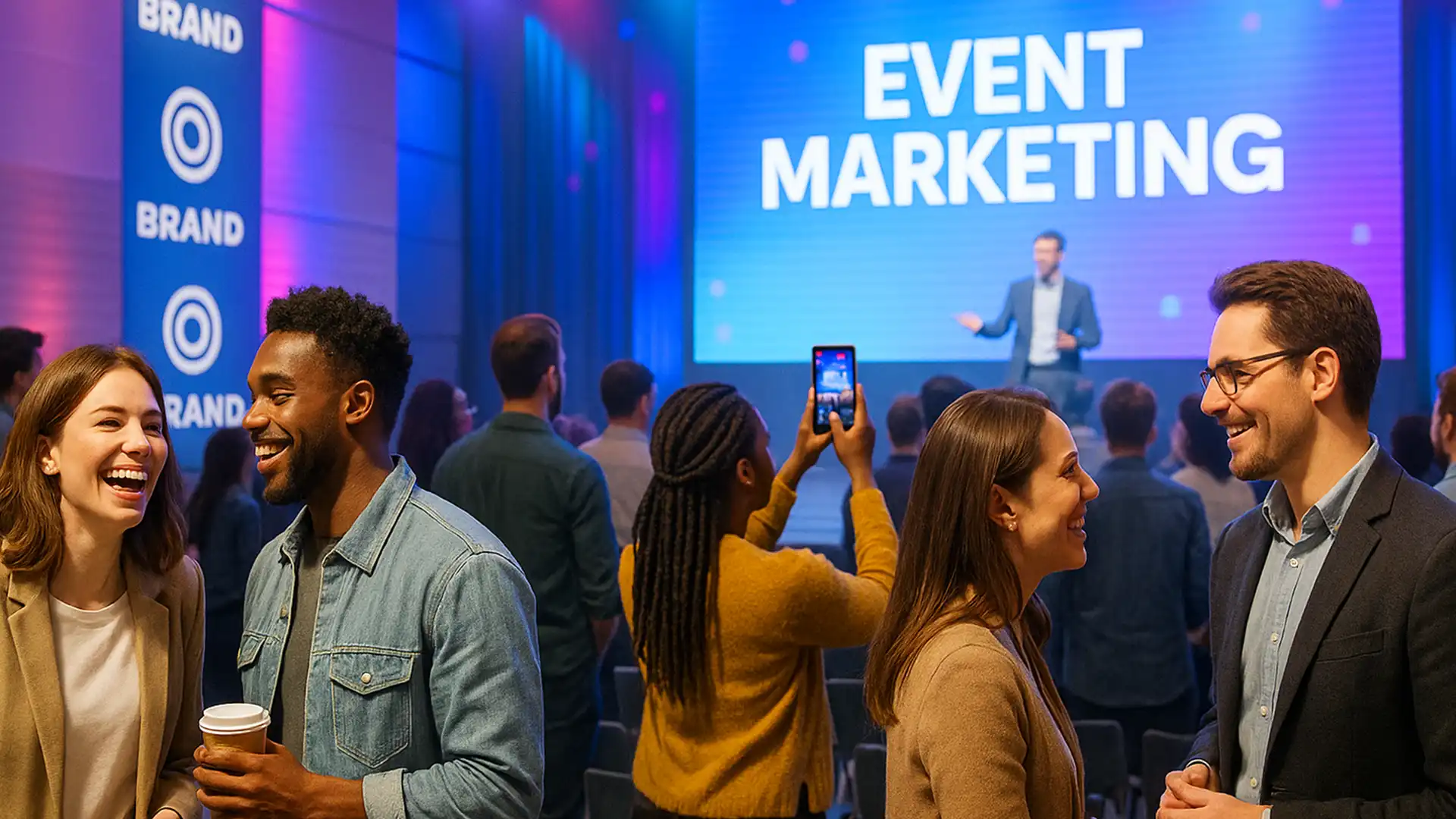Events are more than just gatherings; they are a powerful marketing tool. While traditional advertising quickly loses its impact, event marketing creates lasting impressions because it evokes emotions and enables personal experiences. Direct contact with your target group builds closeness and trust, increases brand awareness, and promotes customer loyalty.
In this article, we present nine creative ideas that will help you bring your brand to life and organize successful events.
Creating worlds of experience instead of traditional product presentations
If you only show slides at your event or place a product on a stage, the effect will usually be minimal. People don’t remember technical data, they remember experiences. That’s why it’s crucial to create experiences that actively involve your target audience.
Imagine your guests being able to try out your product directly, immerse themselves in a thematically designed brand world, or experience it with all their senses. This is how you turn a presentation into an experience that evokes emotions.
- Pop-up events: Transform temporary locations into creative brand spaces that surprise and intrigue.
- Interactive installations: Use touchscreens, augmented reality, or virtual reality to bring your product to life.
- Multisensory experiences: Work with sound, scent, or light to connect your brand with emotions.
- Storytelling spaces: Design spaces that tell a story and convey your brand values.
Hybrid events with interactive formats
Not everyone can or wants to attend an event in person. Hybrid formats combine the best of both worlds: they bring together a live audience while also engaging a digital audience. This allows you to increase your reach and make your event more flexible.
To prevent hybrid events from degenerating into mere livestreams, you should actively involve the digital participants. The more interactive you make your event, the higher the level of attention and the more memorable your message will be.
Get direct feedback from all participants, whether on-site or online.
Give digital guests the opportunity to ask questions and engage in conversation.
Include quizzes, competitions, or small challenges that all participants can solve together.
Enable exchange in breakout sessions or virtual lounges.
Make presentations and workshops available digitally after the event to extend their reach.
Community building around the event
An event is not a one-off highlight that ends after the day of the event. If you really want to benefit from your event marketing in the long term, you should retain your participants even after the event. The best way to do this is to build a community around your event where people can exchange ideas, network, and maintain a lasting awareness of your brand.
By providing your guests with a platform for interaction, you can transform one-time contacts into lasting relationships. This not only ensures greater loyalty, but also facilitates the marketing of future events.
- Exclusive social media groups: Create closed LinkedIn or Facebook groups where participants can continue to exchange ideas.
- Event apps: Use apps that enable networking functions, chats, or content sharing after the event.
- Follow-up webinars or Q&A sessions: Hold small online events after the main event to keep the conversation going.
- Content hubs: Make presentations, videos, or white papers available in an online archive that only event participants can access.
- Networking initiatives: Initiate regular get-togethers, meetups, or smaller digital gatherings that build on the event.
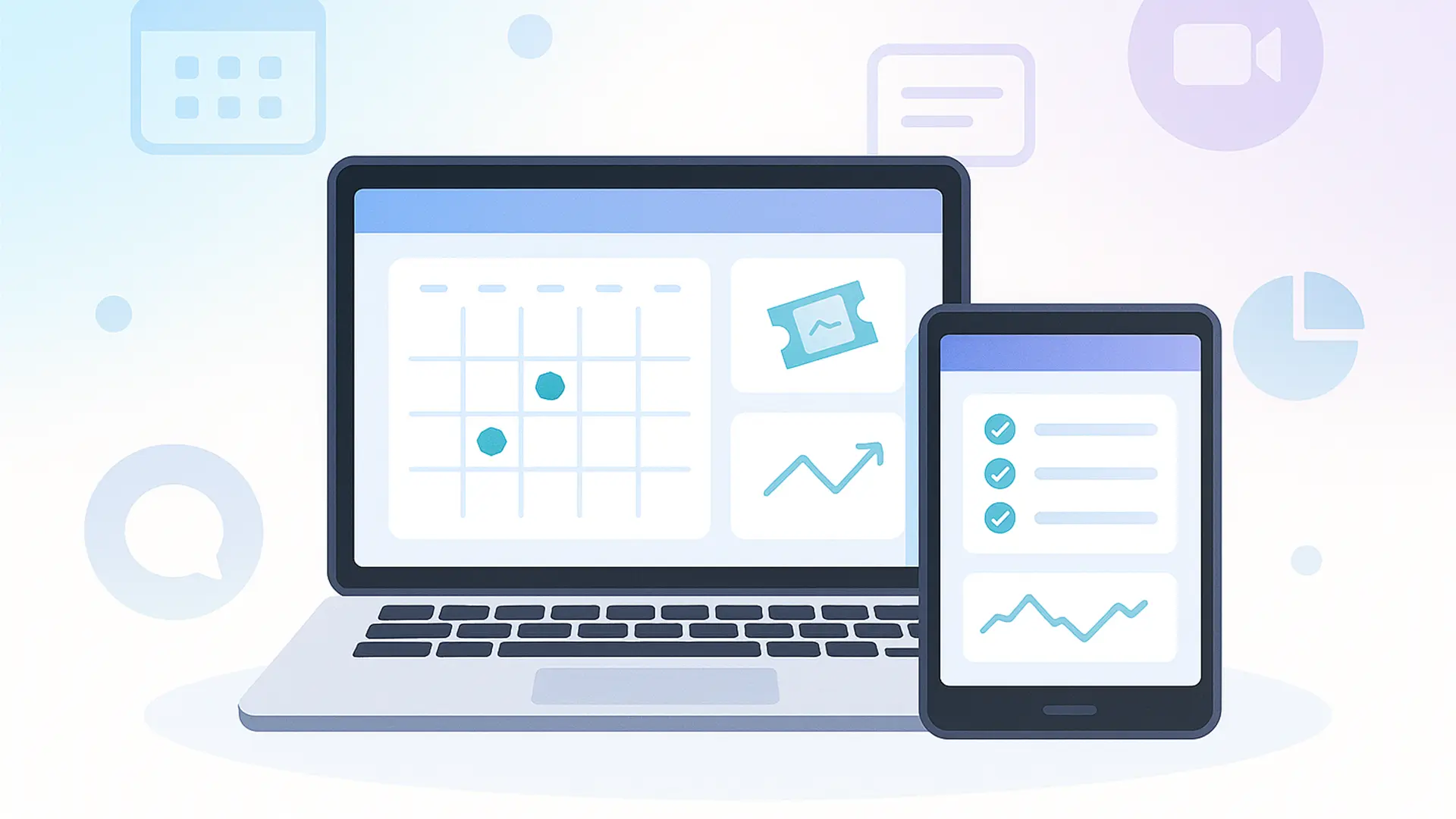
Which event management software is right for your use case? We show you categories, possible applications, and suitable tools.
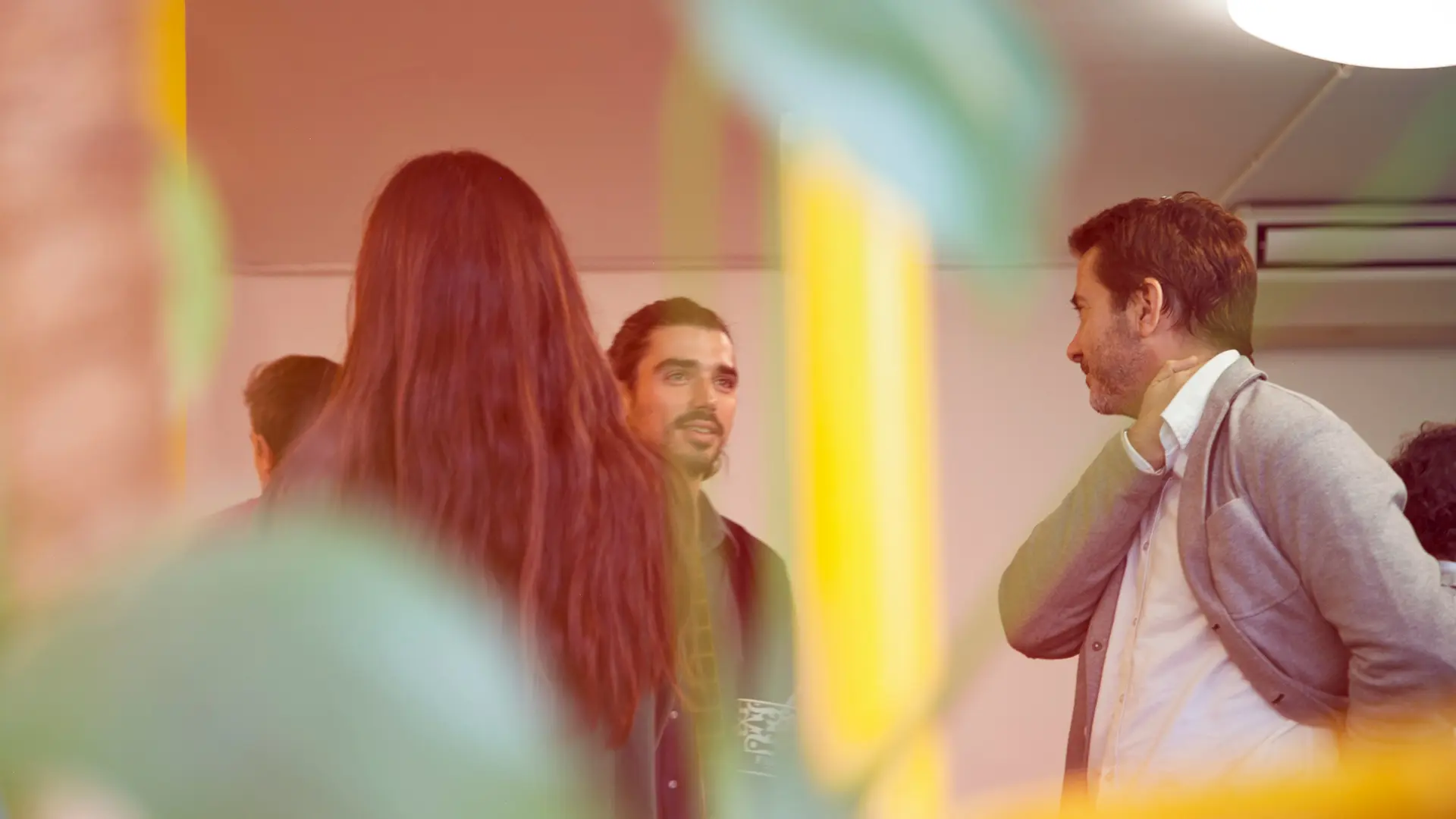
Find out how to network successfully at events and how to build lasting contacts with the right strategies and tools.
Engage influencers and brand ambassadors
Events thrive on reach and attention. If you want to boost your event marketing, influencers and brand ambassadors can make a decisive contribution. Not only do they bring an audience with them, they also lend your event additional credibility.
It is crucial that you don’t just choose the biggest names, but personalities who fit your brand and have a genuine connection to your target audience. Authenticity is more important than pure follower numbers.
- Advance promotion: Have influencers announce your event on social media and draw attention to the registration process.
- Live coverage: Engage them during the event, for example through Instagram Stories, TikTok clips, or live streams.
- Moderation or speaker role: Use influencers as hosts, panel participants, or speakers.
- Behind-the-scenes content: Give them exclusive insights that they can share with their community.
- Follow-up: Use your reach to share highlights, recaps, or best-of videos.
Storytelling as an event marketing tool
Facts and figures alone are not enough to inspire your participants. People remember stories much better than numbers. If you want to make your event marketing more successful, you should therefore use storytelling. A good story gives your event a common thread and makes your message emotionally tangible.
Storytelling can be reflected in many elements of your event: in the theme, in the design, in the dramaturgy of the program, or even in the communication before and after the event. The clearer the story, the stronger the impact.
- Develop a central theme: Give your event a leitmotif that runs through all of its content.
- Emotional staging: Use music, visuals, or lighting design to reinforce your message.
- Plan the dramaturgy: Structure your program like a story with highlights and a clear conclusion.
- Integrate participants: Let your guests become part of the story themselves, for example through interactive formats or gamification.
- Extend communication: Tell the story in the invitation and continue it on social media after the event.
Sustainability as a unique selling point
Sustainability has long been more than just a trend. Many participants today pay attention to how responsibly an event is planned and implemented. By focusing on sustainable concepts in your event marketing, you not only position your brand as modern and forward-looking, but also create a strong unique selling point compared to your competitors.
An environmentally conscious event concept has a positive effect on your image and strengthens the emotional bond with your target group. At the same time, it shows that you are taking social responsibility seriously.
- Digital tickets and documents: Go paperless and rely on apps or QR codes.
- Regional partners and suppliers: Reduce transport distances and strengthen the local economy.
- Sustainable materials: Use reusable stands, decorations, and equipment.
- Zero-waste catering: Offer regional and seasonal dishes and avoid single-use products.
- CO₂ compensation: Offset the ecological footprint of your event through certified projects.
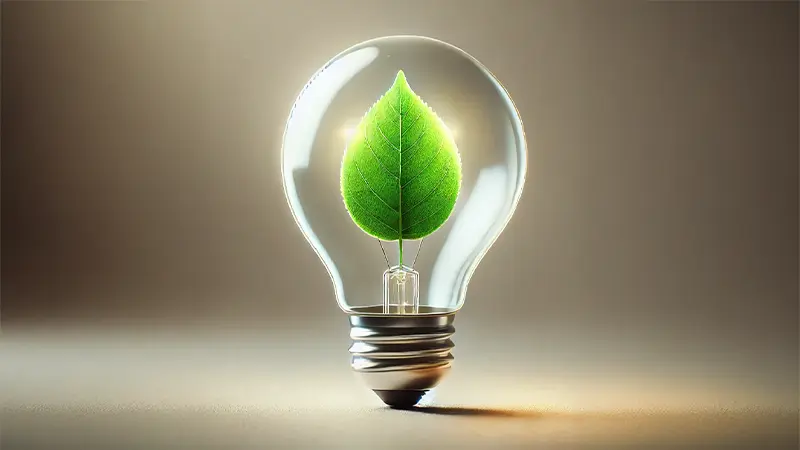
In unserem White Paper erläutern wir nachhaltige Veranstaltungen und geben Beispiele, wie sie realisiert werden können.
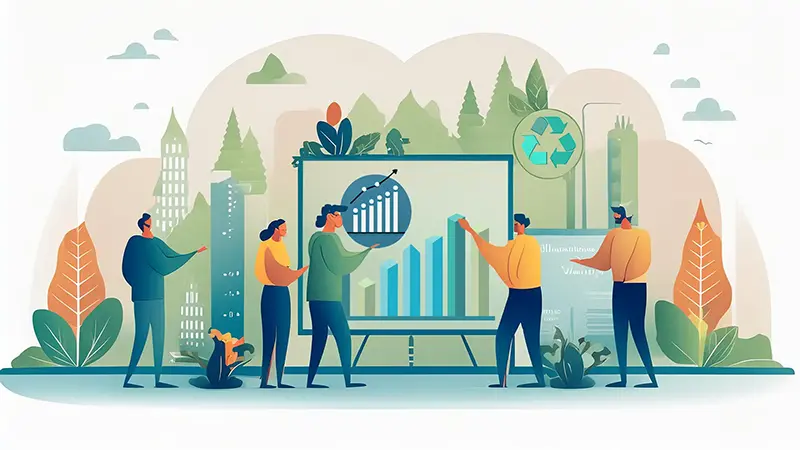
Mit unseren Tipps für nachhaltige Veranstaltungen können Sie für eine ökologische Bilanz sorgen und sogar Kosten und Aufwand sparen.
Data-driven event marketing
Event marketing thrives not only on creativity, but also on data. When you plan and evaluate your events based on data, you make better decisions and increase the efficiency of your measures. Data helps you understand which formats work, which content inspires, and where you can best use your resources.
Through the targeted use of data, you can personalize your events, measure their success, and clearly demonstrate their ROI. This makes your event marketing more predictable and compelling.
- Personalized invitations: Use participant data to customize content.
- Analyze participant behavior: Track registrations, check-ins, dwell time, or interactions during the event.
- Feedback systems: Use surveys and evaluation tools to gather opinions and suggestions for improvement.
- Define key performance indicators: Set clear KPIs such as participant numbers, conversion rate, or social media engagement.
- Measure ROI: Compare costs and results achieved, such as leads generated or increases in sales.
Content recycling from events
An event does not end on the day it takes place. By cleverly reusing your content, you can extend its impact and significantly increase the value of your event. This so-called content recycling ensures that your event marketing not only generates attention once, but also has a long-term effect.
Lectures, workshops, and discussions can be used to create a wide variety of content formats that you can play across different channels. This allows you to reach people who were unable to attend the event while also boosting your visibility.
Turn keynotes or panels into easy-to-read articles.
Cut short videos from lectures or interviews for LinkedIn, Instagram, or TikTok.
Use recordings of discussions for audio formats.
Bundle event content into detailed documents for lead generation.
Make presentations or entire sessions available on your website or event platform.
Gamification and interactive experiences
People love playful elements. When you incorporate gamification into your event marketing, you automatically increase attention, motivation, and interaction. Game elements make your event more dynamic and ensure that participants remain actively involved instead of just listening passively.
This works for both live events and digital formats. It is important that gamification fits your event goal and is not used purely as an end in itself.
- Quizzes and competitions: Offer themed quizzes with small prizes.
- Challenges: Encourage participants to complete tasks, collect points, or share their progress.
- Interactive apps: Use event apps that integrate leaderboards, badges, or virtual rewards.
- Live voting: Let the audience vote on program items or winners.
- Escape rooms or team games: Encourage playful collaboration on-site or online.
Conclusion
Event marketing is much more than just organizing individual events; it is a strategic tool for bringing brands to life and actively engaging people. While traditional advertising often fizzles out quickly, experiences that appeal to all the senses linger in the memory and strengthen the emotional bond between companies and their target groups.
The nine ideas in this article illustrate how versatile event marketing can be. Whether you focus on hybrid concepts, promote community building, use storytelling, develop sustainable formats, or integrate modern technologies such as virtual reality and AI, it is crucial that every event clearly conveys your brand message and creates real added value for participants.
A successful event does not end with the applause on the day of the event. Event marketing only unfolds its full effect through follow-up, content recycling, and targeted performance measurement. Those who plan consistently, use creative formats, and truly understand their target audience transform events into sustainable touchpoints that strengthen both reach and customer loyalty.
FAQ:
What is event marketing?
Event marketing refers to the targeted use of events to bring a brand, product, or service to life. Unlike traditional advertising, which usually only conveys information, event marketing creates direct experiences that evoke emotions and remain memorable.
- Experience orientation: Participants are actively involved and experience the brand with all their senses.
- Direct contact: Events enable personal encounters between companies and their target groups.
- Versatile formats: From exhibitions and conferences to hybrid and virtual events.
- Integrated communication: Event marketing is part of the overall marketing mix and is supported by channels such as social media, PR, and email.
How does event marketing differ from traditional marketing?
Although traditional marketing and event marketing pursue similar basic goals, namely attracting attention and building customer loyalty, they differ greatly in the way they work.
Traditional marketing
Communication: One-sided, brand sends messages to target group
Experience factor: Information is the main focus
Channels: TV, print, online advertising, email
Objective: Reach and rapid visibility
Duration of effect: Often short-term, messages can quickly fade
Target group involvement: Passive, consumers absorb messages
Event marketing
Communication: Dialogue-oriented, direct interaction with participants
Experience factor: Emotions and personal experiences shape perception
Channels: Live events, exhibitions, conferences, digital and hybrid events
Objective: Build trust, retain customers, strengthen brand loyalty
Duration of effect: Long-term, as experiences remain more vividly in the memory
Target group participation: Active, participants shape the experience
What are the objectives of event marketing?
Event marketing can be used for a variety of purposes. It is important to clearly define your goals in advance so that you can measure your success later on. Typical goals include:
- Increase brand awareness: Events put your brand in the spotlight and increase its reach.
- Strengthen customer loyalty: Personal encounters build trust and deepen existing relationships.
- Generate new leads: Gain valuable contacts through registrations, networking, and digital participant data.
- Bring products to life: Participants can test and try out your products and give immediate feedback.
- Build or improve your image: A professional event highlights your expertise and innovative strength.
- Motivate employees: Internal events such as team workshops or company parties promote loyalty and cohesion.
- Sharing knowledge: Conferences, training sessions, and workshops position you as an expert.
What are the advantages of event marketing for companies?
Event marketing offers numerous advantages that traditional marketing measures alone cannot achieve. The greatest added value lies in the fact that events evoke emotions and create experiences that remain in the memory.
- High attention: Events are extraordinary and attract the full attention of your target group.
- Emotional connection: Experiences strengthen trust in your brand and promote loyalty.
- Direct feedback: You receive immediate responses from participants and can better assess your offers.
- Networking: Events bring people together and open up new business contacts.
- Efficient lead generation: Registrations and sign-ups provide valuable data for your marketing.
- Content source: Events provide material for blogs, social media, newsletters, and PR.
- Image and brand enhancement: A professionally designed event positions your company as innovative and approachable.
What are the risks and challenges in event marketing?
Event marketing offers many opportunities, but it also comes with risks and challenges. If you consider these early on, you can avoid costly mistakes and organize your events more professionally.
- High costs: Event marketing is often budget-intensive. Unexpected expenses for technology, personnel, or location can blow the budget.
- Planning effort: The organization is complex. Errors in schedules or logistics have an immediate negative impact.
- Participant acquisition: A successful event depends on the number of visitors. Low registration numbers result in a low ROI.
- Technical problems: Whether livestreaming, hybrid platforms, or presentation technology—technical failures can jeopardize success.
- Unclear goal definition: Without clear goals, it remains unclear whether the event was successful.
- External risks: Factors such as weather, pandemics, or last-minute cancellations are difficult to predict.
- Team overload: Internal resources are often underestimated, which can lead to stress and a decline in quality.
What phases are part of an event marketing strategy?
Successful event marketing follows a clear process. Each phase is important in order to achieve a coherent overall result and ensure that your goals are met.
- Determine what you want to achieve with the event (e.g., leads, awareness, customer loyalty)
- Determining the target audience and the appropriate format
- Development of an event concept with content, design, and schedule
- Selection of location, technology, and partners
- Budget and time planning
- Promotion via social media, newsletters, PR, and landing pages
- Cooperation with influencers or partners
- Participant registration and ticketing
- Smooth organization on site or online
- Participant support, moderation, and technical implementation
- Live communication via social media
- Analysis of key figures (participant numbers, leads, engagement)
- Sending thank-you emails, surveys, and other content
- Content recycling: Preparation of presentations or sessions
How does event marketing differ in B2B and B2C?
Event marketing works in both the B2B and B2C sectors, but the focus and objectives differ significantly.
B2B event marketing
Target group: Business customers, partners, decision-makers
Goals: Lead generation, knowledge transfer, network building
Formats: Trade fairs, conferences, workshops, webinars
Communication: Factual, benefit-oriented, often with a focus on ROI
Long-term impact: Building long-term business relationships
Measuring success: Leads, contracts signed, ROI analysis
B2C event marketing
Target group: End consumers, general public
Objectives: Brand awareness, product sales, image cultivation
Formats: Festivals, roadshows, product launches, promotional events
Communication: Emotional, experience-oriented, with a focus on lifestyle and brand
Long-term effect: Generating attention and short-term purchasing incentives
Measuring success: Reach, brand perception, sales growth
What types of event marketing are there?
Event marketing can be implemented in many different ways. Which type is right for you depends on your goals, your target audience, and your budget. Basically, the following types can be distinguished:
- Traditional face-to-face events such as exhibitions, conferences, company celebrations, or roadshows
- Advantage: direct personal contact, intense experience
- Online formats such as webinars, virtual exhibitions, or digital conferences
- Advantage: wide reach, easy participation, lower costs
- Combination of in-person and online event
- Advantage: maximum flexibility, range, and interactivity
- Activities in public spaces, such as pop-up stores, street marketing, or guerrilla marketing campaigns
- Advantage: Surprise effect, high level of attention
- Small formats such as meetups, user groups, or workshops
- Advantage: Proximity to the target group, strong loyalty building
- Events that are entirely focused on experience and emotion, such as brand worlds or immersive shows
- Advantage: high memorability and strong emotional connection
How can the success of event marketing be measured?
To ensure that your event marketing pays off in the long term, you should clearly measure its success. This is the only way to know whether your goals have been achieved and where you need to make adjustments. It is crucial that you define your KPIs (key performance indicators) before the event.
- Number of participants: How many people registered and how many actually attended?
- Participant structure: Does the target group you reached match your planned personas?
- Engagement during the event: interactions in chat, questions, polls, or social media activities.
- Leads and contacts: How many new contacts or business inquiries have been generated?
- Conversion rate: Percentage of participants who subsequently perform a desired action (e.g., purchase, subscription, appointment booking).
- Participant satisfaction: Results from surveys or feedback tools.
- Reach and visibility: social media impressions, hashtag usage, website visits.
- Return on investment (ROI): Ratio of costs to measurable benefits, e.g., sales or contracts concluded.
💡 Tip: Use digital tools such as event platforms or CRM systems to collect data centrally and evaluate it directly.
When should you start marketing an event?
The right time to start event marketing depends on the size, format, and target audience. As a general rule, the larger and more important the event, the more lead time you need.
- Large conferences and exhibitions: begin save-the-date communications at least 6 to 12 months in advance.
- Medium-sized corporate events, conferences, hybrid events: allow approx. 3 to 6 months' lead time.
- Workshops, webinars, or smaller online events: actively promote them 4 to 8 weeks in advance.
- Save the Date: generate interest early on and secure appointments.
- Registration phase: Put the landing page online, communicate early bird offers or discounts.
- Intensive phase: intensify social media, newsletters, and PR in the last 4 weeks.
- Last call: send reminders and direct messages in the last 7–10 days.
💡 Tip: It’s better to start a little earlier than too late. Participants need time to plan, and a continuous marketing countdown increases anticipation for your event.
